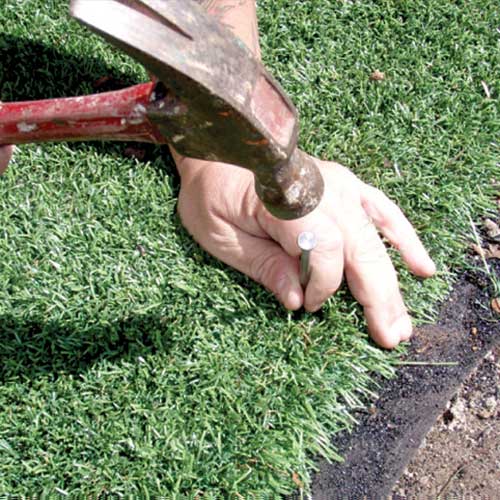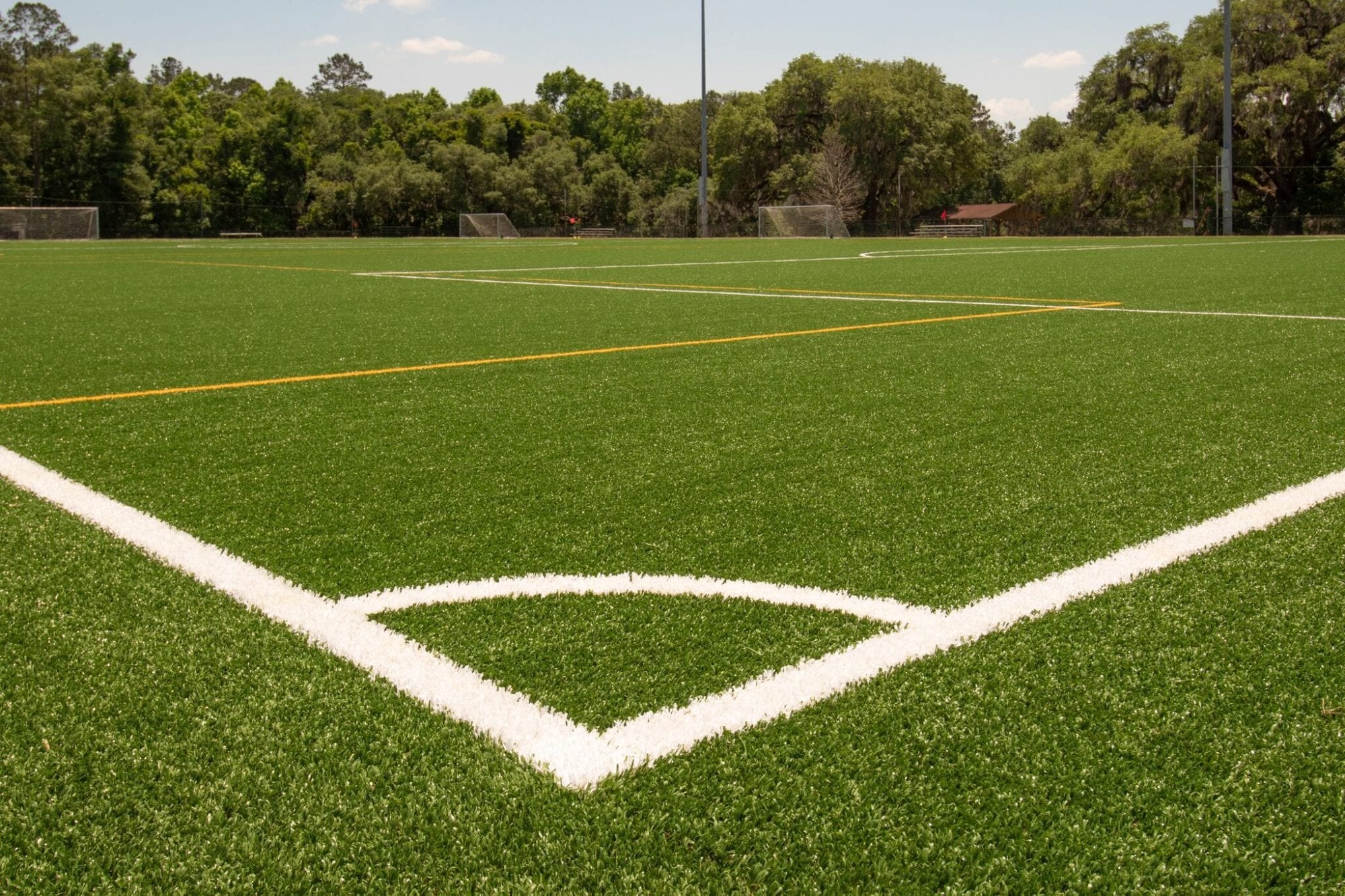Delve Into the Environmental Advantages of Opting for Artificial Turf Solutions
The adoption of synthetic turf options presents a compelling possibility to deal with pushing ecological obstacles. By dramatically lowering water usage and decreasing the application of harmful chemicals, these alternatives not only promote lasting landscaping yet also shield neighborhood ecosystems. The lower carbon impact linked with reduced maintenance activities adds to a more lasting strategy to land administration. However, the effects of these advantages extend past mere conservation initiatives, elevating inquiries concerning their lasting influence on habitat preservation and overall environmental balance. Discovering these measurements reveals an intricate interaction worth thinking about.
Water Preservation Benefits
One of the most considerable benefits of fabricated lawn is its capability to preserve water. In comparison, synthetic turf does not require watering, substantially decreasing the overall need for water resources.
By removing the demand for regular watering, synthetic grass adds to sustainable landscape methods and helps alleviate the environmental effect of excessive water usage. The conservation of water expands to the reduction of drainage, which can lead to soil erosion and river air pollution.
Additionally, the installment of artificial grass permits municipalities and house owners to designate water sources more effectively, concentrating on essential uses such as drinking water and farming. The shift in the direction of synthetic grass not just promotes liable water usage however also aligns with wider ecological goals targeted at protecting natural resources.
As communities progressively prioritize sustainability, the water conservation advantages of synthetic grass offer an engaging case for its adoption in household and industrial landscaping projects.
Minimized Chemical Use
The change to synthetic grass significantly decreases the dependence on chemical therapies frequently utilized in all-natural lawn upkeep. Standard lawn administration commonly involves the application of pesticides, fertilizers, and herbicides to advertise development and control bugs. These chemicals can posture threats to human wellness, regional wildlife, and the environment, adding to dirt and water contamination.
On the other hand, man-made turf eliminates the need for these dangerous materials. When installed, it requires marginal maintenance, primarily containing normal cleansing and occasional infill replenishment. This reduction in chemical use not just profits the instant environment yet additionally adds to wider environmental stability. By reducing the release of synthetic compounds into the ecosystem, man-made grass advertises healthier dirt and water supply.
Additionally, the lack of chemical overflow related to fabricated turf installations helps safeguard neighborhood waterways from contamination, sustaining aquatic life and preserving biodiversity. Turf installation phoenix az. As neighborhoods significantly prioritize sustainable techniques, selecting synthetic grass provides a practical remedy that aligns with ecological preservation goals. Via this change, homeowner can enjoy lavish eco-friendly rooms without endangering ecological health, leading the way for a more lasting future
Reduced Carbon Footprint

In addition, the installation of man-made lawn can cause substantial water conservation. Natural yards call for substantial amounts of water for irrigation, which not only contributes to the carbon impact related to water extraction and therapy yet also stress local water resources. On the other hand, artificial grass needs minimal upkeep, calling for no watering, consequently considerably minimizing water usage and its connected energy prices.
Additionally, the long life of synthetic grass adds to its lower carbon influence. With a life-span of approximately 15 years or more, the requirement for frequent substitutes is lessened, causing much less waste and lower energy consumption in manufacturing and throwing away standard lawn options. Generally, synthetic grass presents a lasting choice for ecologically conscious landscape design.
Habitat Preservation
Environment conservation is an important consideration in the debate over landscape design options, particularly when contrasting synthetic grass to natural grass. Natural grass lawns typically require substantial upkeep, including site here the use of plant foods, herbicides, and chemicals, which can negatively affect neighborhood environments. These chemicals can seep right into the soil and rivers, hurting native flora and animals and interrupting local environments.
In contrast, fabricated lawn provides an opportunity to minimize the environmental impact of landscape design. By opting for artificial turf, home owners can lessen the disruption of all-natural environments connected with standard grass care methods. Fabricated turf visit this site right here gets rid of the demand for damaging chemicals, thereby securing nearby wild animals and maintaining the honesty of surrounding ecological communities. Additionally, the installment of artificial lawn can result in the conversion of former yard areas into even more biodiverse landscapes, such as pollinator gardens or native plant areas, which can support local wildlife.
Ultimately, the transition to man-made lawn not just conserves water and decreases maintenance initiatives however also fosters a more harmonious relationship in between human tasks and the natural atmosphere, promoting habitat conservation while doing so.
Long-Term Sustainability
Lasting sustainability is a vital consider assessing the benefits of synthetic grass over conventional grass yards. One of the most substantial advantages of artificial lawn is its longevity; it can last as much as 15-20 years with minimal maintenance, whereas all-natural grass calls for regular reseeding and substitute. This durability reduces the demand for continuous sources, such as water, fertilizers, and chemicals, which are crucial for preserving a healthy yard lawn.
Additionally, synthetic grass adds to a decrease in carbon discharges related to lawn care tools. Standard yards commonly need gas-powered mowers, leaners, and blowers, all of which add to air contamination. Arizona turf. In comparison, synthetic grass gets rid of the need for such equipment, promoting a cleaner environment
Additionally, the manufacturing of synthetic grass increasingly makes use of recycled materials, improving its sustainability account. As producers embrace environment-friendly practices, the environmental impact of synthetic grass proceeds to diminish.

Conclusion
The adoption of synthetic turf solutions presents considerable environmental benefits, consisting of significant water conservation, minimized dependence on harmful chemicals, and a lower carbon impact. Artificial grass help in preserving natural habitats by minimizing land disruption and promoting long-lasting sustainability through the use of resilient products. Jointly, these factors highlight the capacity of synthetic grass to contribute positively to environmental health and wellness and offer a feasible alternative to typical landscaping practices in an increasingly resource-conscious globe.
In comparison, fabricated grass does not need watering, substantially decreasing the general need for water resources. By minimizing the release of artificial compounds into the ecological community, synthetic lawn promotes healthier dirt and water systems.
Furthermore, the installment of artificial turf can result in visit this site significant water conservation. In comparison, synthetic lawn requires minimal upkeep, needing no watering, thereby dramatically lowering water use and its associated power expenses.
